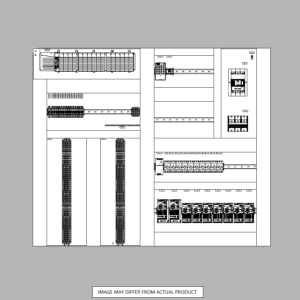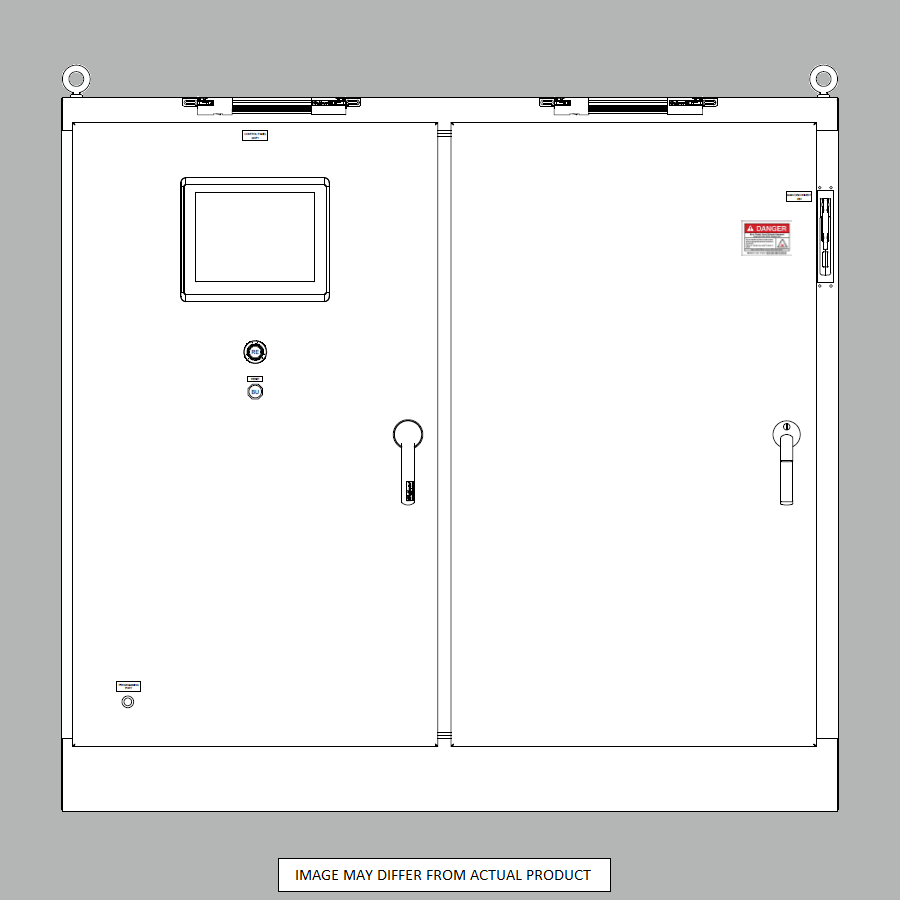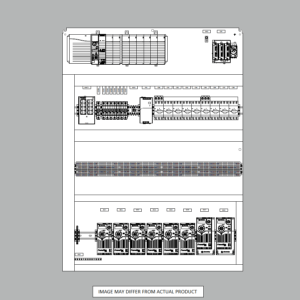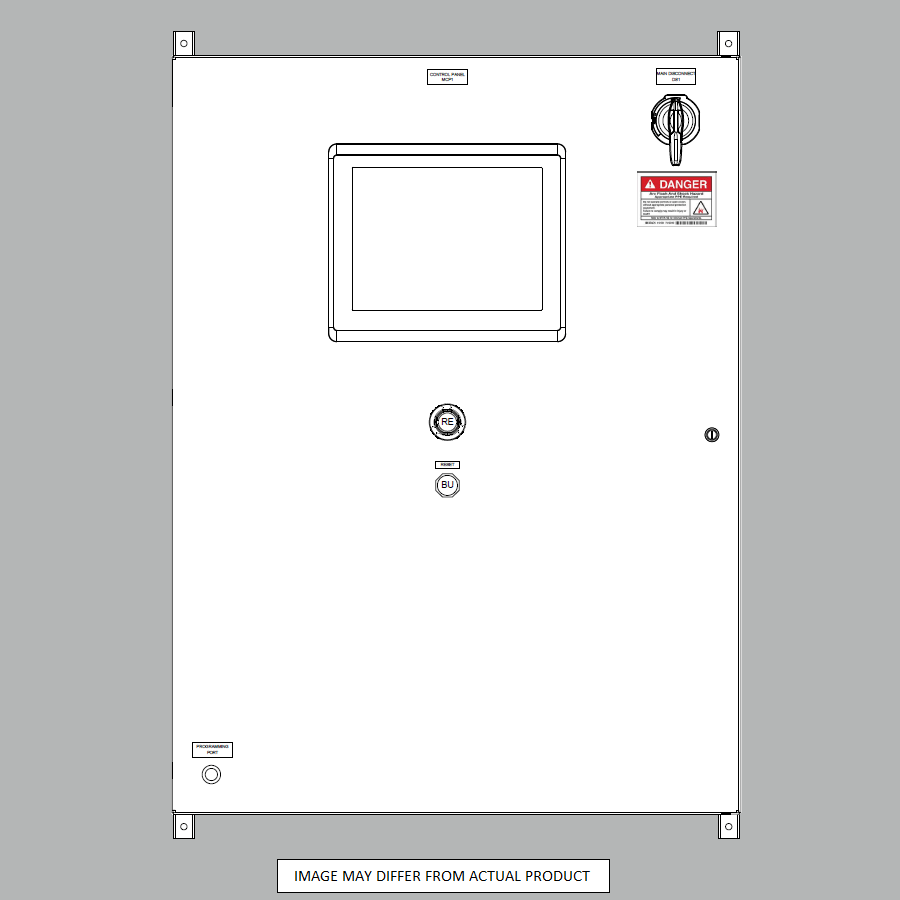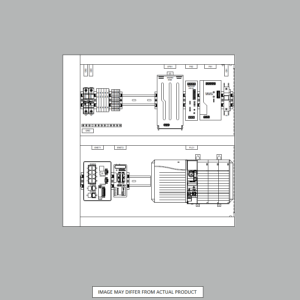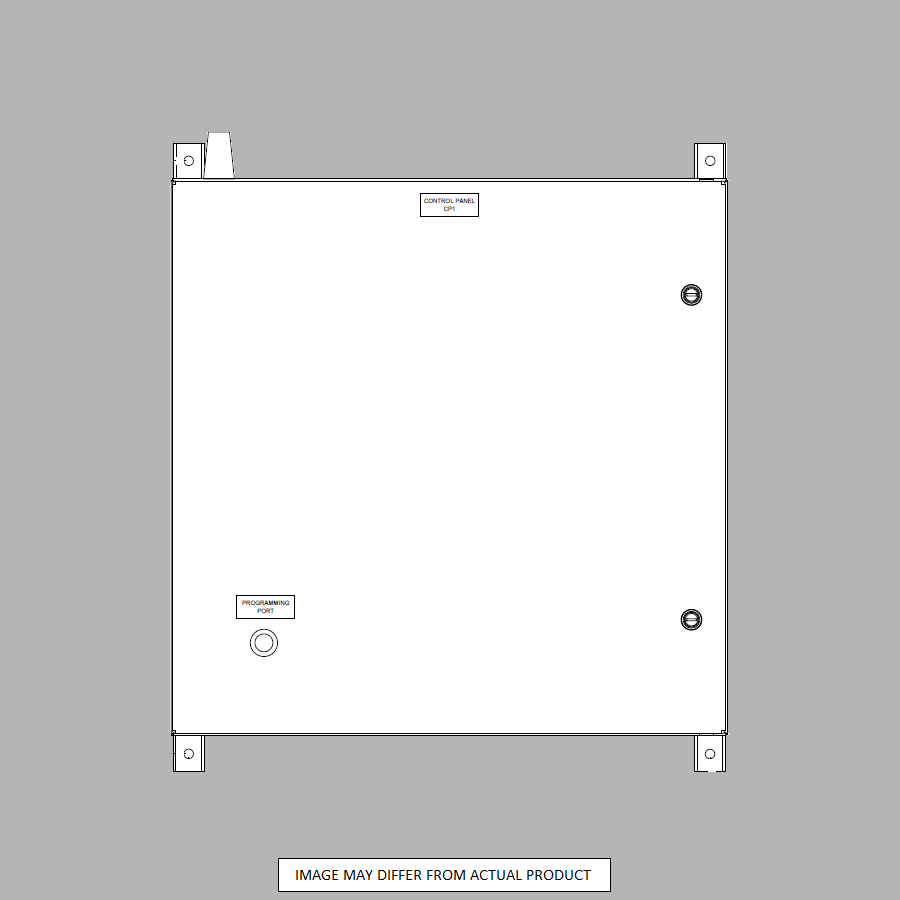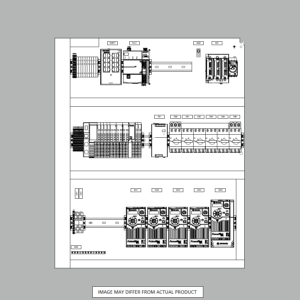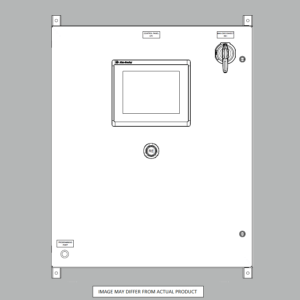Mastering Safety PLC: Basics of Safety Logic Systems
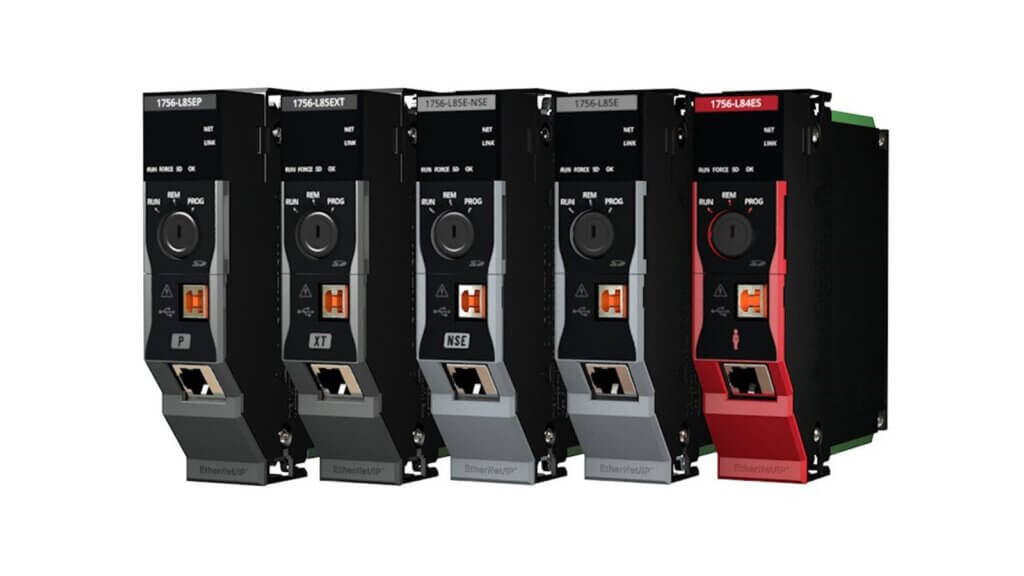
ControlLogix 5580 Controllers – Safety PLC. Image from Rockwellautomation.com
Safety is a critical concern in industrial automation. This article dives into the essential concepts of Safety PLCs and Safety Logic Systems, providing valuable insights into how they ensure a safer working environment. Read on to learn the basics, advanced features, and best practices for integrating these systems into your industrial automation setup.
What is a Safety PLC?
Safety PLCs, or Safety Programmable Logic Controllers, are specialized controllers designed to meet stringent safety requirements in industrial environments. Unlike standard PLCs, Safety PLCs ensure that machines operate safely, preventing accidents and ensuring compliance with safety standards like IEC 61508 and ISO 13849.
Safety PLCs have features like dual-channel inputs, fault detection, and safety interlocks. These features enable them to perform safety-critical functions reliably, ensuring that any failure does not lead to unsafe conditions. For example, if one channel fails, the dual-input system ensures the other channel can maintain control, thereby avoiding a system failure.
How Does a Safety PLC Make Automation Safer?
Safety PLCs make industrial automation safer by incorporating safety functions directly into the control system. This integration allows for real-time monitoring and response to unsafe conditions. For example, a safety light curtain can block a PowerFlex 525 VFD during dangerous situations, ensuring machinery stops immediately when a safety breach is detected.
Using advanced safety logic, Safety PLCs can perform complex safety functions, such as emergency stops and safety gate monitoring, which are crucial for maintaining a safe working environment. Additionally, these controllers often have TÜV certification, indicating they meet high-performance levels for safety applications.
Safety functionality in PLCs is vital for making safety an integral part of the automation process. These controllers can monitor various safety devices, such as emergency stops, safety relays, and safety light curtains. The PLC can immediately shut down equipment or alert operators when a potentially dangerous situation is detected.
Programming Safety PLCs: A Step-by-Step Guide
Programming a Safety PLC involves several steps to ensure it functions correctly and safely. Here’s a simplified guide:
Step 1: Define Safety Requirements
Identify the safety functions needed for your application, such as emergency stop, light curtains, and safety interlocks. Consider the potential consequences of failure and ensure the Safety PLC can handle these scenarios effectively.
To properly define safety requirements, performing a thorough safety risk assessment is critical. This involves the following steps:
- Schedule a cross-functional collaborative meeting with representatives from engineering, operations, maintenance, EHS, and other relevant departments. Diverse perspectives are key to identifying all potential hazards.
- Before the meeting, have each team member complete safety risk assessment forms specific to their functional area. These forms should prompt them to consider all possible safety failure modes, the severity of potential consequences, and the likelihood of occurrence.
- During the meeting, systematically review each identified hazard, discussing them at length to gain a comprehensive understanding. Consider factors like the operating environment, maintenance requirements, foreseeable misuse, and fault conditions.
- For each hazard, collaboratively determine the required safety functions to mitigate risks, such as e-stops, guard interlocks, light curtains, safety PLCs, etc. Assign risk reduction values to each measure.
- Document the identified hazards, risk levels, and proposed mitigation measures in a formal risk assessment report. Use this to guide the design of safety systems and the selection of components like safety PLCs.
By dedicating time upfront for a rigorous safety risk assessment, you can be confident that you’ve uncovered and addressed the full scope of potential hazards. This lays the foundation for an automation system with a comprehensive and effective safety control scheme utilizing a safety PLC.
Step 2: Select the Safety PLC
Choose a Safety PLC that meets your application’s requirements. Allen Bradley GuardLogix is popular due to its robust features and reliability. These PLCs are designed to integrate safety instructions seamlessly with standard control functions, providing a comprehensive safety solution.
Step 3: Develop the Safety Program
The safety functions are programmed into the PLC using ladder logic or function block diagrams (FBD). Ensure each safety function is thoroughly tested. The software environment used to program Safety PLCs is typically designed to simplify the development and debugging of safety logic.
Step 4: Validate and Lock the Program
Test and validate that all safety functions work as intended under various conditions. This step is critical to ensure the safety system performs correctly in real-world scenarios. Testing should be thorough, including simulations of different modes of operation to ensure the system can handle any situation.
Some key aspects of testing:
- Each safety function (e-stops, guard interlocks, light curtains, etc.)
- Fault detection and safe shutdown
- Proper operation under all machine operating modes
- Response to foreseeable misuse or unexpected conditions
- Proper safety PLC redundancy and diagnostics
Document all testing procedures and results as evidence of due diligence.
Once the safety program has been fully tested and validated, the final critical step is to LOCK the software code per the safety PLC manufacturer’s recommendations. This typically involves:
- Assigning strong passwords to prevent unauthorized access to the safety PLC program.
- Applying safety signatures to the validated code using the manufacturer’s programming software. This creates a unique identifier confirming the code has not been altered.
- Enabling any available hardware locks on the safety PLC to prevent physical tampering.
- Securely archiving a copy of the validated, locked program code.
Locking the program ensures that the carefully designed and tested safety functionality cannot be inadvertently or maliciously modified, maintaining the integrity of the safety system. Any future changes would require going through safety review and revalidation processes.
By thoroughly validating the safety program and then securely locking it, you can be assured that the safety PLC will robustly and reliably perform its critical safety functions to protect personnel and equipment.
Step 5: Deploy and Monitor
Deploy the Safety PLC in your automation system and continuously monitor its performance to ensure ongoing safety compliance. Regular testing and maintenance are essential to keep the system functioning correctly and to avoid downtime.
Best Practices for PLC Programming in Industrial Automation
Adhering to best practices ensures reliable and safe operation when programming PLCs in industrial automation. Here are some tips:
Modular Programming
Break down the safety logic into manageable modules to simplify debugging and testing. This approach makes identifying and fixing issues in specific program parts easier.
Commenting Code
Document your code with comments to make it easier to understand and maintain. Clear comments help other engineers understand the logic and reasoning behind your code, which is crucial for troubleshooting and future updates.
Regular Testing
Periodically test safety functions to ensure they remain effective over time. Regular testing helps identify potential issues before they lead to unsafe conditions or system failures.
Redundancy
Use redundant systems and dual-channel inputs to enhance safety and reliability. Redundancy ensures that if one part of the system fails, the other can take over, preventing accidents and maintaining operation.
Integrating Safety Logic into Your Automation System
Integrating safety logic into your automation system involves configuring the Safety PLC to interact with other components like sensors and actuators. Here’s how to do it effectively:
Identify Safety Zones
Divide your automation system into safety zones, each with specific safety requirements. Safety zones help isolate potential hazards and ensure that only the affected areas are shut down in case of a safety breach.
Select Safety Devices
Choose appropriate safety devices for each zone, such as light curtains, safety interlocks, and emergency stops. Ensure that these devices are compatible with your Safety PLC and can provide the necessary safety inputs.
Configure Safety Logic
Program the Safety PLC to handle safety device input and execute appropriate safety actions. This step involves developing the safety logic and testing it thoroughly to ensure it operates as intended.
Ensure Compliance
Verify that your safety logic complies with relevant safety standards and regulations. Compliance with standards like IEC 61508, IEC 62061, and ISO 13849 is crucial for ensuring the safety and reliability of your automation system.
Understanding Safety Standards and Regulations
Compliance with safety standards is crucial for ensuring the safety and reliability of industrial automation systems. Key standards include:
IEC 61508
This standard covers the functional safety of electrical/electronic/programmable electronic safety-related systems. It provides a framework for designing and assessing these systems, ensuring they meet the required safety levels.
ISO 13849
This standard focuses on machinery safety, particularly the design and integration of safety-related parts of control systems. It outlines requirements for ensuring the safety and reliability of these systems.
IEC 62061
This standard deals with the safety of machinery and the functional safety of electrical, electronic, and programmable electronic control systems. It provides guidelines for designing and implementing safe control systems in industrial environments.
Understanding and adhering to these standards ensures your safety system is robust and reliable. Compliance with these standards also helps reduce the risk of accidents and ensures your system meets regulatory requirements.
How to Test and Validate Safety Functions
Testing and validating safety functions is critical to ensuring they work correctly. Follow these steps:
Initial Testing
Test each safety function individually to verify it operates correctly. This step involves simulating various conditions to ensure the safety function responds appropriately.
Integration Testing
Test the safety functions in the context of the entire system to ensure they work together as intended. Integration testing helps identify any issues arising when different safety functions interact.
Periodic Validation
Validate the safety functions regularly to ensure they remain effective over time. This can involve re-running tests and checking for any changes in performance. Periodic validation helps maintain the safety and reliability of your system.
Troubleshooting Common Issues with Safety PLCs
Troubleshooting Safety PLCs can be challenging but necessary to maintain safety and reliability. Common issues include:
Faulty Sensors
Ensure all sensors are functioning correctly and replace any that are defective. Faulty sensors can lead to false alarms or failures to detect unsafe conditions, compromising the safety of your system.
Wiring Issues
Check all wiring connections to ensure they are secure and correct. Loose or incorrect wiring can cause intermittent failures or inaccurate operation of the safety functions.
Software Bugs
Review and debug the safety program to fix any errors that could cause malfunctions. Software bugs can lead to incorrect operation of safety functions, potentially leading to unsafe conditions.
System Failure
Implement redundant systems to ensure the Safety PLC can continue to operate even if a component fails. Redundancy helps prevent complete system failures and ensures that safety functions remain operational.
Advanced Safety Applications: GuardLogix and Beyond
Advanced safety applications require sophisticated Safety PLCs like GuardLogix, which offer enhanced features and capabilities. These controllers are ideal for applications requiring high safety and reliability levels. They integrate safety and standard control functions, providing a seamless solution for complex automation systems.
GuardLogix controllers support advanced safety logic programming, making them suitable for various safety applications, from simple emergency stops to complex safety interlocks and motion control systems. These controllers can also be integrated with SCADA systems to monitor and control safety functions.
True Safety Application Design
A properly designed safety application includes more than just a safety PLC – it incorporates safety-rated components across the entire control chain, from sensor inputs to logic solving to actuated outputs. There are three key elements.
Safety-rated input devices
These sensors or switches detect a safety event. Examples include:
- Emergency stop pushbuttons
- Light curtains that detect a person entering a hazardous area
- Interlocking switches that ensure a guard is in place
- Safety mats that sense someone standing in an unsafe position
These input devices are specifically designed and rated for safety applications, with high reliability and fault tolerance. They often use redundant contacts or special coding to ensure a failure doesn’t go undetected.
Safety-rated logic devices
These take the inputs from the safety sensors and execute the safety control logic to determine what actions must be taken. The most common types are:
- Safety relays, which provide basic AND/OR logic and safety timer functions
- Safety PLCs, which allow for more complex safety logic and can integrate with standard control systems
Safety logic devices have special architectures with redundancy and self-diagnostics to ensure failures don’t compromise the safety function. They are certified to strict standards like IEC 61508.
Safety-rated output devices
These are the components that take action to bring the system to a safe state, such as:
- Contactors and breakers to remove power
- Safety-rated drives or servos to perform a controlled stop
- Pneumatic valves to exhaust air pressure and apply brakes
- Hydraulic valves to de-energize actuators
Like safety inputs, these devices are designed with high reliability and fault tolerance. They typically use force-guided contacts or special circuit designs to ensure a failure doesn’t prevent the safe action.
By using properly rated and certified safety devices across the entire control chain, you can design a complete safety solution that is extremely reliable in detecting hazards and taking the necessary protective actions. No single component failure should be able to prevent the system from reaching the safe state.
Of course, it takes careful application of safety standards and thorough analysis to correctly select and apply safety components for each machine’s unique risks. However, by viewing safety as a complete input-logic-output system, you can achieve a high level of risk reduction to protect people and equipment.
Conclusion: Key Takeaways for Ensuring Safety in Automation
- Understand Safety PLCs: Know what they are and how they enhance safety in industrial automation.
- Follow Best Practices: Implement best practices for PLC programming to ensure reliable and safe operation.
- Integrate Safety Logic: Effectively integrate safety logic into your automation system for optimal safety.
- Adhere to Standards: Comply with relevant safety standards and regulations to ensure your system meets safety requirements.
- Regular Testing: Continuously test and validate safety functions to maintain safety and reliability.
- Troubleshoot Issues: Proactively troubleshoot and resolve common issues to keep your safety system running smoothly.
Following these guidelines can create a safer and more reliable industrial automation environment, protecting your equipment and personnel.
Summary
- Safety PLCs: Specialized controllers designed for safety-critical applications.
- Key Features: Dual-channel inputs, fault detection, and safety interlocks.
- Programming: Use ladder logic or function block diagrams and validate thoroughly.
- Integration: Identify safety zones, select appropriate devices, and ensure compliance.
- Standards: IEC 61508, ISO 13849, IEC 62061.
- Testing: Initial, integration, and periodic validation.
- Troubleshooting: Address faulty sensors, wiring issues, and software bugs and implement redundancy.
- Advanced Applications: Utilize GuardLogix for complex safety needs.
Ensuring safety in industrial automation is not just about following regulations but protecting lives and assets. Understanding and implementing these concepts and practices can provide a safer working environment and a more efficient automation system. Safety is not just a regulatory requirement but a fundamental aspect of industrial automation that protects lives and enhances productivity. Contact us at Automation Ready Panels to discuss your next Safety PLC project.
-
Large Process Automation: Panelview 5000, ControlLogix 5580
$24,073.00 Select options -
Small Process Automation: Panelview 5000, ControlLogix 5580
$20,321.00 Select options -
Small Process Automation: ControlLogix 5580, UPS Battery Backup, Cellular Modem
$18,999.00 Select options -
Advanced Automation: Panelview 5000, Safety CompactLogix 5380
$10,269.00 Select options

